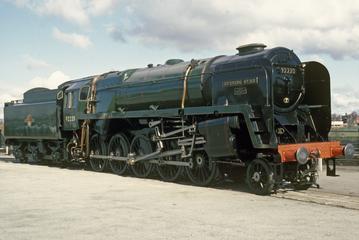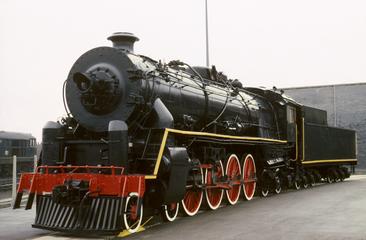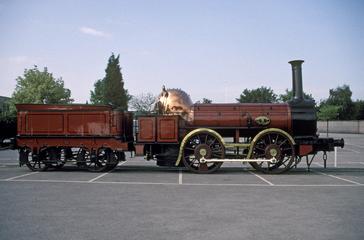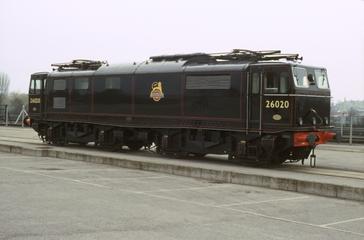
Great Northern Railway 'Henry Oakley'
Steam locomotive and tender, Great Northern Railway, No 990 "Henry Oakley" 4-4-2, designed by H.A. Ivatt, built at Doncaster 1898, withdrawn 1937.
The Great Northern Railway (GNR) Class C1 was designed to haul express trains between London King’s Cross and York. By the 1890s, faster and heavier GNR express trains were getting beyond the capabilities of Patrick Stirling’s 8ft ‘Singles’, which required delicate handling. These were often ‘double-headed’ – an inefficient practice that cost money and fuel. Locomotive engineer Henry Ivatt succeeded Stirling in 1895 and saw that steam locomotives with larger boilers and fireboxes were essential to keep pace with service needs. Locomotive weight was limited by track quality on the GNR, so Ivatt looked to developments in the United States for inspiration.
Here, a 2-4-2 express passenger tender locomotive had evolved into a 4-4-2 wheel arrangement to improve stability at speed. The axle behind the driving wheels had important advantages – it supported a deeper firebox and helped spread the weight. The first successful 4-4-2 tender locomotives were built for the Philadelphia and Reading Railroad’s Atlantic Coast Line in 1894, earning the wheel arrangement the ‘Atlantic’ nickname. From Ivatt’s perspective, ‘Atlantics’ not only accommodated a larger boiler, but also had scope for future upgrades.
Designed in 1897 and completed at Doncaster Works in 1898, Class C1 No 990 was the first British Atlantic tender locomotive. It was thoroughly tested before construction of a further 21 was commenced in 1900. The same year No 990 was named “Henry Oakley” after the GNR’s general manager. The locomotives were nicknamed 'Klondykes' after the 1897 goldrush in Canada. More sure-footed than the ‘Singles’, the class was well-capable of meeting the GNR’s express schedules, although they were often driven hard. Modifications were made to improve performance, though a revised Class C1 with a larger boiler to improve steam production emerged in 1902.
The original 22 Class C1s became known as small boiler Atlantics. They were inherited by the London and North Eastern Railway (LNER) in 1923 and were reclassified Class C2 – those with larger boilers remained Class C1. Relegated to lesser duties, withdrawals began in the mid-1930s, with No 990 preserved in 1937. Initially displayed at the LNER’s York Railway Museum, it was restored to working order in 1953 and 1975. In 1977 it was placed on static display at Bressingham Steam Museum, Norfolk before returning to York in 2016.
Details
- Category:
- Locomotives and Rolling Stock
- Object Number:
- 1975-7001
- Materials:
- wood (unidentified), iron, steel (metal), copper (metal), brass (copper, zinc alloy), paint, rubber (unidentified) and glass
- type:
- steam locomotive
- credit:
- British Rail, Clapham




